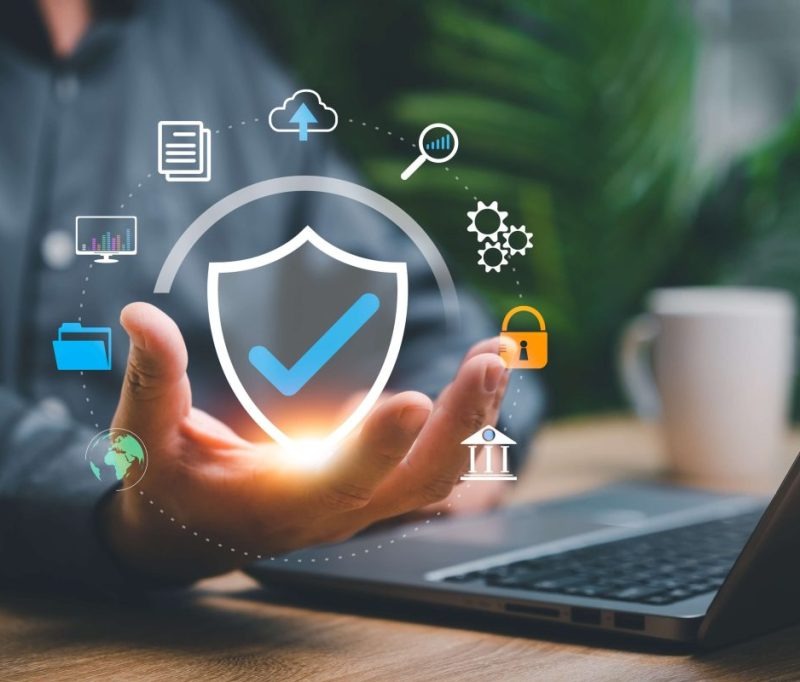In today’s digitally driven world, the threat landscape continues to evolve at an alarming pace. Cybercriminals are becoming more sophisticated, targeting organisations of all sizes. While many businesses invest heavily in technological defences, such as firewalls and antivirus software, the human element frequently remains the weakest link. Empowering your team through effective cybersecurity awareness training is essential to guard your organisation’s assets and data.
Why Cybersecurity Awareness Training is Critical
Cybersecurity awareness training educates employees about the various cyber threats they might encounter, from phishing emails and ransomware to social engineering attacks. According to studies, human mistake or carelessness is the primary cause of a sizable percentage of data breaches. When your employees are well-informed, they become your first line of defence, reducing the risk of breaches and expensive security incidents.
The value of training security awareness goes beyond mere knowledge. It instills a security-first mentality that promotes alertness, accountability, and proactive behavior at all organisational levels. This cultural shift can dramatically reduce vulnerabilities and improve overall security posture.

Common Cybersecurity Threats Employees Face
Understanding the threats is fundamental to creating effective training programmes. Employees must recognise the tactics cybercriminals use to exploit weaknesses:
- Phishing: Fraudulent emails or messages that trick users into revealing sensitive information or clicking on malicious links.
- Ransomware: Malicious software that encrypts files and demands a ransom for their release. Infection frequently starts with a phishing message or a compromised website.
- Social Engineering: Psychological manipulation that exploits human trust. Attackers may pose as colleagues, suppliers, or IT personnel to extract confidential information.
- Password Attacks: Attackers can get unauthorised access by simply guessing or cracking weak or frequently used passwords.
- Insider Threats: Either malicious or accidental actions by employees can lead to security breaches.
By illustrating real-world examples, training becomes more relatable and impactful, helping employees understand the consequences of lapses in security.
Key Components of Effective Cybersecurity Awareness Training
Not all training is created equal. To ensure your investment delivers results, your cybersecurity awareness training must be comprehensive, engaging, and continuous.
Interactive and Engaging Content
Traditional lecture-style training often fails to capture attention. Instead, interactive modules, quizzes, videos, and simulations keep employees engaged. Gamified methods of instruction enhance retention and promote engagement.
Regular, Ongoing Sessions
Cybersecurity isn't a one-time topic. Continuous learning is pivotal to keep pace with evolving threats. Regular refresher courses and updates ensure employees remain alert and informed.
Role-Based Customisation
Different roles face different threats. Customising training content to specific departments or job functions increases relevance. For example, finance teams may need extra focus on invoice fraud, while customer service staff should be alert to social engineering tactics.
Practical Exercises and Simulated Attacks
Simulated phishing exercises provide hands-on experience. These tests help identify vulnerabilities and educate employees on spotting and reporting suspicious activity.
Clear Policies and Best Practices
Training should clarify company security policies, acceptable use of IT resources, and procedures for reporting incidents. Employees need clear guidance on how to act responsibly.
Empowering Employees to Take Ownership of Security
Effective cybersecurity awareness training empowers employees to feel responsible and confident in their ability to protect company data.
Creating a Culture of Security
A security-aware culture begins at the top, with leadership demonstrating commitment and encouraging open communication about cyber threats. Employees should feel valued and included in the organisation’s security mission.
Encouraging Reporting Without Fear
Employees must know they can report potential threats or mistakes without blame or reprisal. A supportive environment fosters quicker identification and mitigation of risks.
Incentivising Good Practices
Recognition programmes or rewards for cybersecurity champions motivate employees to maintain high standards.
Providing Resources for Continuous Learning
Offering access to newsletters, online resources, and regular updates keeps security front of mind beyond formal training sessions.
Measuring the Effectiveness of Your Training Programme
To maximise impact, it’s important to measure how well your cybersecurity awareness training is working and make improvements as needed.
Key Metrics to Track
- Results from simulated phishing campaigns reveal how well employees identify and avoid phishing attempts.
- The number of reported security incidents or suspicious activities helps gauge staff vigilance and awareness.
- Employee quiz scores and assessment results indicate how much cybersecurity knowledge has been retained.
- Participation rates and feedback from training sessions measure engagement and satisfaction with the programme.
Adjusting Training Based on Issues
Analysing metrics helps identify knowledge gaps or areas needing reinforcement. Training should evolve alongside emerging threats and organisational changes.
Implementing Cybersecurity Awareness Training in Your Organisation
Launching a successful training programme requires planning and commitment.
Steps to Roll Out Training Easily
- Assess your organisation’s specific security threats and requirements.
- Choose or develop training content customised to your workforce.
- Communicate the importance of the training to all staff.
- Schedule sessions and ensure availability for all employees.
- Conduct initial training followed by regular refreshers.
- Monitor participation and effectiveness continuously.
Using Internal and External Resources
You may decide to use external vendors who specialise in cybersecurity training or develop internal programmes with input from your IT and security teams. Combining both approaches often yields the best results.
Overcoming Common Challenges
Some employees may resist training due to perceived time constraints or lack of interest. Address this by emphasising the personal and organisational benefits and making the sessions engaging and concise.

The Role of IT Support in Aylesbury in Cybersecurity Training
A strong IT support team plays a vital part in supporting cybersecurity awareness training. In Aylesbury, many organisations rely on specialised IT support services to help develop and maintain effective security programmes. IT support teams assist with implementing security tools, managing threat detection systems, and providing ongoing guidance to employees.
When IT support in Aylesbury integrates cybersecurity awareness training with technical measures, organisations can produce a comprehensive defence strategy. This combination reduces the likelihood of breaches and minimises damage should an incident occur.
Conclusion
Empowering your team with effective cybersecurity awareness training is no longer voluntary — it’s essential. By educating employees about the latest threats, fostering a culture of security, and partnering with professional IT support in Aylesbury, businesses can significantly reduce risk and protect their valuable assets.
Renaissance Computer Services Limited specialises in delivering customised IT solutions, including cybersecurity training programmes that help organisations strengthen their defence capabilities. Investing in your team’s security knowledge today will pay dividends in resilience tomorrow.







